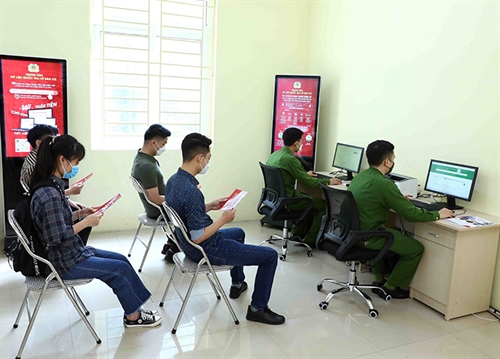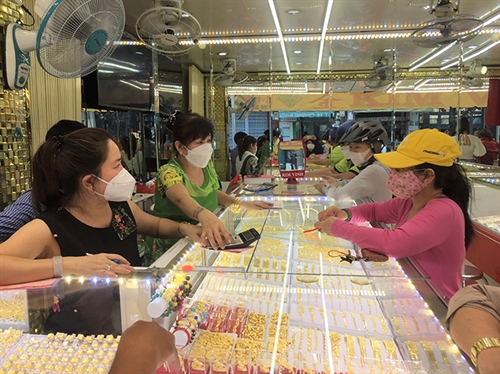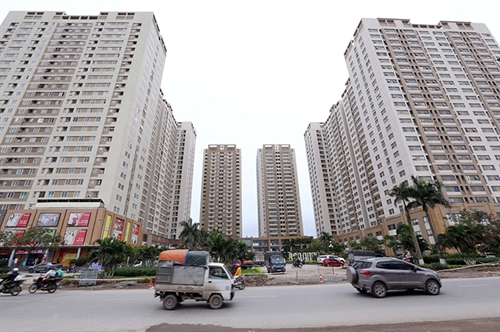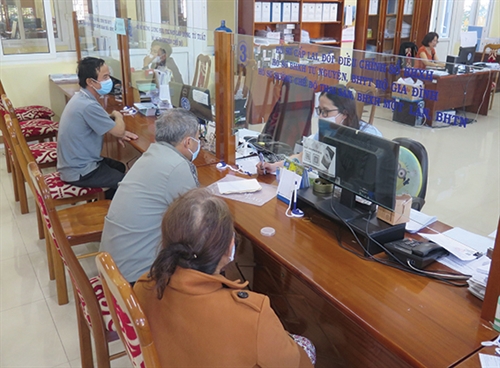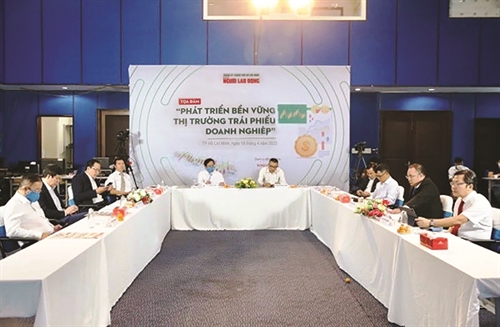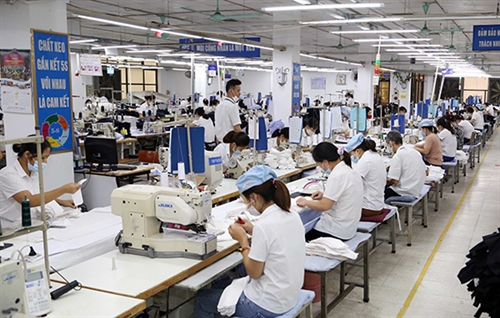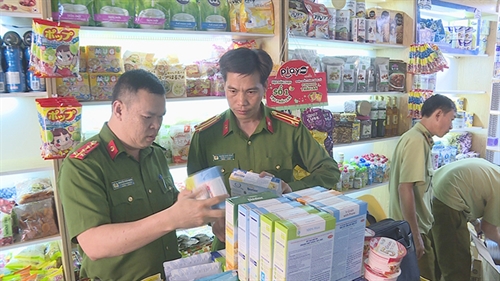At the National Assembly Standing Committee’s meeting to discuss the revised draft Law on Medical Examination and Treatment on September 21, Vice Chairman of the National Assembly Nguyen Khac Dinh put forward the idea of establishing a specialized force to take charge of protecting health workers on duty.
Undoubtedly, the legislator’s proposal stemmed from the increase in medical staff assaults in recent times.
In the late evening of July 27, when doctor P.H.T. and his colleagues at the Ho Chi Minh City-based Gia Dinh People’s Hospital were busy with patients as usual, a 10-year-old girl with a fish bone stuck on her throat was taken to the hospital by her father. After performing initial assessment, doctor T. told the little girl to sit and wait for an ear-nose-throat doctor to come and perform an endoscopy to remove the fish bone.
At that time, the emergency department was crowded with patients. About five minutes later, when doctor T. was reading other patients’ CT scan and X-ray images, the girl’s father entered the room to demand immediate treatment for his daughter even though the doctor repeatedly explained that the girl was not in a dangerous state. Then, all of a sudden, the man pushed doctor T. against the wall and strangled him.
“It all happened so quickly, just within about 10 minutes since the patient was admitted to the hospital,” doctor T. later talked to the online newspaper VnExpress.
Just 10 days later on August 6 when doctor T.’s case had not yet cooled down, another health worker assault occurred in Gia Dinh hospital.
The attacker was the son of a 65-year-old patient who was hospitalized for “respiratory failure, acute pulmonary edema, and hypertensive crisis.” When the patient, who was on breathing support, needed to relieve herself, her doctor said it was dangerous for her to go to the toilet in such a condition and asked a nurse to bring sanitary equipment to the patient’s bed. However, the patient’s son refused and insisted on taking his mother to the restroom. The doctor tried to talk to the son once again but the conversation then escalated to a row. The son then left and later returned in an attempt to stab the doctor with a sharp blade of his nail clipper. Fortunately, the assault failed and no health worker was injured.
These are merely two among numerous cases of attacks on health workers nationwide. According to data of the Ministry of Health’s Department of Medical Service Administration, in most cases of insecurity and disorder at medical examination and treatment establishments, attacked persons were doctors (accounting for 70 percent) and nurses (15 percent).
Up to 90 percent of the assaults occurred in premises of hospitals and medical centers, 60 percent of the cases happened when doctors were providing emergency aid to patients and 30 percent of the cases took place when doctors were giving explanations about patients’ diseases and health conditions to their relatives.
Assaults on health workers mainly occurred at provincial hospitals, making up 60 percent of the total cases, followed by central hospitals with 20 percent. Almost all of assaulters were patients’ relatives.
Increasing violence against medical workers has caused insecurity and disorder at medical establishments and consequently lowered the quality of examination and treatment.
A week after the assault, doctor T. told the VnExpress that he plans to take an unpaid leave for a while until he feels more secure. “I’m frustrated as I just want a safe environment to render emergency aid to patients,” he said.
Sharing with doctor T., doctor Tran Van Phuc from Hanoi’s Saint Paul Hospital said: “Do you think a doctor with a scared mind and a trembling hand can provide good medical services to patients?”
 |
| A C-section at the National Cancer Hospital on September 6__Photo: VNA |
Reasons behind violence against health workers
In a talk with the English-language daily Việt Nam News, doctor Phan Quoc Hung, director of Lam Thao District’s Health Center in the northern province of Phu Tho, said moral degradation and lack of legal awareness made people show their disdain for hospital regulations and not hesitate to use their fists when dissatisfied with health services.
“Medical examination and treatment were a very risky practice as unexpected incidents could occur at any time beyond doctors’ ability,” Hung said, adding that this could be a key source of conflict between patients’ families and medical staffs. It was not to mention overloaded hospitals and substandard facilities that may stress patients and their families.
However, despite the rising assaults and violence against medical workers, most hospitals still lack necessary equipment and personnel to deal with unexpected security events. It is not to mention the fact that training to improve professional skills for health workers and security guards in conflict situations has neither been conducted regularly nor met requirements. Meanwhile, the coordination between hospitals and local police remains loose.
Comprehensive solutions
According to the Ministry of Health, it is necessary to make all-round solutions to ensure order and security at hospitals, including improving the quality of medical services, strengthening coordination between the health sector and the police force, and strictly handling anyone who commits assaults on health workers.
In light of this, the ministry proposed revising the Law on Medical Examination and Treatment toward enhancing responsibility of related parties for medical examination and treatment services and prohibiting acts of obstructing or threatening medical staffs.
Noteworthily, the draft law has a separate article on assurance of security and order at medical establishments and safety for health workers which lists several measures, including: (i) establishing a system of monitoring and warning of security risks at emergency departments, obstetrics departments, pediatrics departments, medical examination departments, and other conflict-prone places; (ii) disallowing patients’ relatives to enter emergency departments’ areas where professional techniques are performed and other specialized areas of hospitals, unless such entry is so requested by doctors; (iii) applying hi-tech solutions to manage patients, patients’ relatives and practitioners; and (iv) training hospitals’ security guards on measures and skills for identifying security risks and handling unexpected circumstances.
Another salient point in the draft law is the proposal allowing hospitals’ on-duty security forces to use supporting tools in accordance with the law on management and use of weapons, explosives and supporting tools. Meanwhile, hospitals’ leaders would be empowered to seize vehicles, tools and utensils used in the cases of security disturbance, hold troublemakers in custody or expel them and block the scenes.
Given that “a doctor cannot protect himself if being punched, kicked or slapped while holding a scalpel,” National Assembly Vice Chairman Dinh proposed relevant agencies to consider the option of establishing a specialized force to take charge of protecting on-duty medical staffs. “The law may further elaborate on funds for setting up such a force or even propose procedures and devices used in protection of medical workers,” he added.
Meanwhile, Chairman of the National Assembly’s Law Committee Hoang Thanh Tung voiced his concerns about contradictions between the draft law and other laws. For example, the measures of holding troublemakers in custody and seizing vehicles and tools have been provided in the Law on Handling of Administrative Violations. However, heads of medical establishments are incompetent to decide on the application of such measures. Thus, the draft law should clarify this issue so as to avoid any contradictions or inconsistencies with existing laws and regulations.
